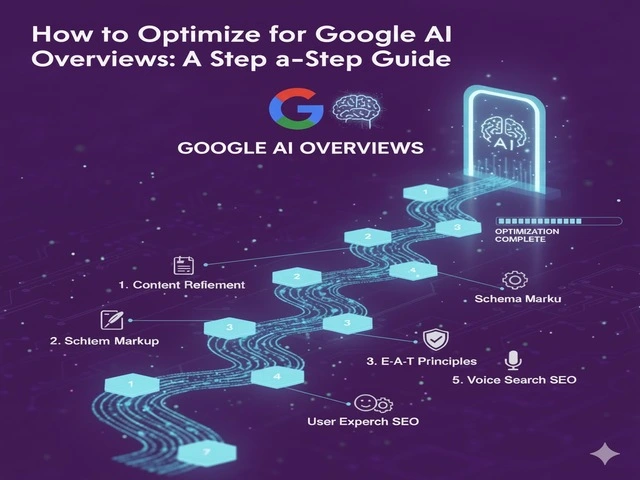Learn how to optimize ecommerce product pages to boost search rankings and drive more sales. This guide covers technical SEO, content strategies, and common pitfalls to avoid.
Product pages are no longer just the final step in a buyer’s journey — they’ve become powerful tools for driving conversions and influencing purchase decisions. But getting users to land there organically? That’s where Ecommerce SEO steps in. Optimising your product pages is no longer optional; it’s the backbone of driving qualified traffic and boosting conversions. Let’s dive deep into a practical guide that helps you fine-tune every element of your ecommerce product pages for visibility and sales.
What is Ecommerce SEO?
Ecommerce SEO refers to a strategic process of improving the visibility of an online store in search engine results. Unlike general SEO, it focuses on optimizing product listings, category pages, navigation, and site structure — all tailored to lead potential customers straight to a purchase decision. It’s not just about ranking high; it’s about attracting the right traffic that converts.
For businesses running on platforms like Shopify, having the right Shopify SEO expert by your side can make a measurable difference. They understand how to leverage native features and customize strategies that improve both site performance and user experience.
What is product page SEO?
You are losing out on opportunities if your SEO strategy doesn’t prioritize your product pages. This blog will teach you how to optimize product pages to improve your Ecommerce SEO rankings and revenue.
With e-commerce spending at an all-time high, everyone hopes to make a profit. There is fierce competition. If you make a mistake, your competitors will gladly take over your desired position in Google’s search results. Additionally, your competitors will seize opportunities related to SEO if you don’t. Another common misunderstanding in eCommerce is that site visitors arrive via the homepage or a category page before descending to a product page. This is a missed opportunity and an incorrect assumption. Often, product sites receive a lot of natural traffic from credit card users ready to make the purchase. You lose opportunities if your ecommerce SEO strategy doesn’t prioritize your product pages. Product page SEO focuses on improving the ranking and traffic of the product pages.
Why Product Pages Matter?
Every product page is a micro-landing page. It serves three major goals: attract search engines, appeal to potential customers, and drive conversions. Poorly optimized pages don’t just fail at ranking; they bleed potential revenue.
A robust SEO for ecommerce website strategy ensures each product page is crafted with buyer intent in mind. From compelling copy and structured data to mobile responsiveness and fast loading times — all these elements determine whether your page will rise in search results or remain invisible.
Pre-Checklist Essentials: Know Before You Optimise
Before jumping into checklists and best practices, lay the groundwork. Here’s what needs to be in place:
- Keyword Research: Avoid guessing. Use tools to identify long-tail and purchase-intent keywords specific to your products.
- Competitor Analysis: Check what’s working for top-ranking pages in your niche and find gaps you can fill.
- Product Categorization: Clear, logical, and user-friendly categories make indexing easier for search engines.
- Mobile-First Readiness: A huge chunk of ecommerce traffic comes from mobile. Your page design should reflect that.
Engaging a digital marketing agency in India can help navigate this foundational phase with tailored audits and insights.
Technical SEO Checklist for Ecommerce Product Pages
The technical side of SEO might not be flashy, but it’s the silent engine that powers performance. Here’s a focused checklist:
- Clean URLs: Avoid strings of numbers or special characters. Use readable, keyword-rich URLs.
- Schema Markup: Add structured data like product name, price, availability, and reviews to enhance visibility in rich snippets.
- Optimised Title Tags & Meta Descriptions: Every product page should have unique, keyword-optimized titles and meta summaries.
- Canonical Tags: Prevent duplicate content issues, particularly if the same product appears in multiple categories.
- Image Optimisation: Use descriptive file names and ALT tags. Compress images for speed without compromising quality.
- Internal Linking: Use smart linking between product pages and relevant blog posts or categories.
Working with a trusted ecommerce SEO company ensures these technical aspects are handled with precision, reducing the risk of common issues that hinder page performance.
Bonus Tips to Further Boost Product Page Rankings
Beyond the basics, small tweaks can go a long way in lifting your rankings:
- User-Generated Content: Enable product reviews. They add fresh content and social proof.
- Video Content: Product demos or customer testimonials enhance engagement and time on page.
- Product Descriptions That Sell: Avoid manufacturer-provided descriptions. Write unique, benefit-led copy that taps into customer pain points.
- FAQs: Anticipate user questions and answer them directly on the product page. This not only helps SEO but also builds trust.
Partnering with a Shopify SEO agency can help implement these enhancements while maintaining the platform’s best practices.
Common Technical SEO Mistakes to Avoid on Product Pages
Even well-meaning efforts can go wrong if you overlook these pitfalls:
- Duplicate Titles or Meta Descriptions: Every product is unique, and your metadata should reflect that.
- Thin Content: Pages with only a product name and price won’t rank. Add meaningful descriptions, specs, and supporting content.
- Broken Links: Especially when products go out of stock or get removed. Use proper redirects to maintain SEO equity.
- Overuse of Keywords: Stuffing product pages with keywords turns off both users and search engines.
- Ignoring Core Web Vitals: Speed, responsiveness, and visual stability directly affect rankings now.
These mistakes can tank your page’s chances of ranking — even if your product is in high demand.
How This Fits Into Your Broader Ecommerce SEO Strategy
Think of product page SEO as a component in a larger engine. While optimizing individual pages is crucial, it should align with a broader framework that includes category SEO, blog content, technical audits, and backlink strategies.
A focused ecommerce SEO marketing strategy will ensure your traffic is consistently growing and converting. Especially if your store is powered by platforms like Shopify, working with specialists in Shopify SEO ensures your on-page efforts support your overall visibility and growth.
Moreover, when it comes to SEO for ecommerce sites, ongoing monitoring is key. Algorithms change, user behaviours evolve, and new competitors emerge. Continuous updates and refinements are what keep your store ahead in the SERPs.
Optimizing your ecommerce product pages is more than a one-time checklist. It’s an evolving blend of strategy, content, technical finesse, and customer-first thinking. In an environment where users expect speed, clarity, and trust, your SEO efforts must match their intent at every click. Done right, each product page becomes a powerful touchpoint that ranks well and converts consistently.
Looking to level up your e-commerce website SEO with expert help? Whether you’re starting fresh or scaling fast, Savit Interactive, a top SEO company in India, brings industry-specific solutions that combine performance-driven tactics with years of domain expertise. As a reputed digital marketing agency in India, we specialize in building strong foundations for long-term ecommerce success.



